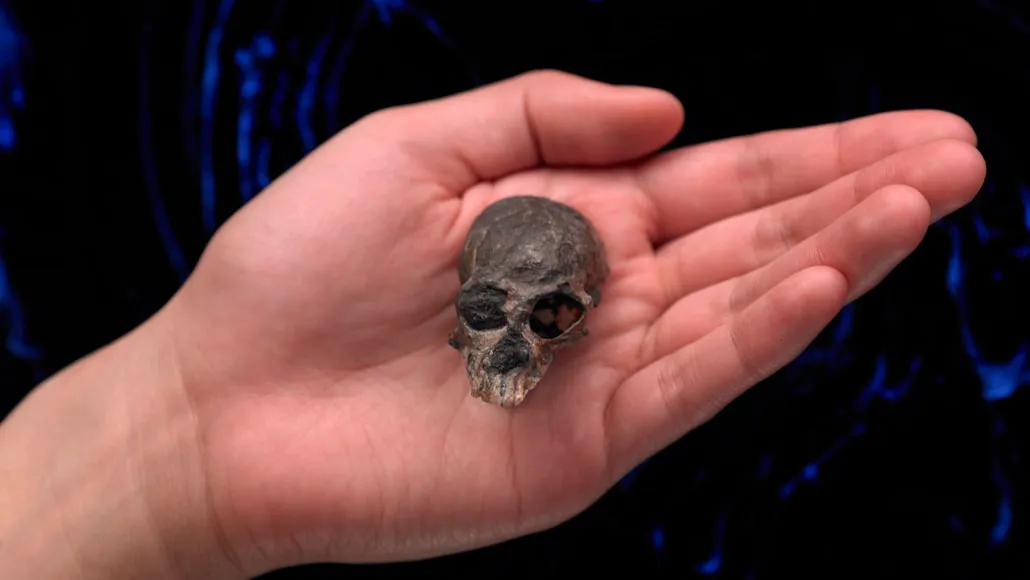A tiny skull fossil suggests primate brain areas evolved separately
Digital reconstruction hints that the organ’s development over time was complicated

A palm-sized, 20-million-year-old fossil skull from an extinct monkey (Chilecebus carrascoensis) contains evidence that different parts of primate brains evolved independently of each other, scientists say.
© N. Wong and M. Ellison/AMNH
A 20-million-year-old monkey skull that fits in the palm of an adult’s hand may contain remnants of piecemeal brain evolution in ancient primates.
Neural landmarks preserved on the skull fit a scenario in which specific primate brain regions expanded or, at times, contracted while other regions remained unchanged, a new study finds. In an early clue to that evolutionary process, researchers say, a small part of the monkey’s brain devoted to odor perception was not counterbalanced by an enlarged visual system, as is typical of primates today.
Primate visual systems expanded in size and complexity over millions of years without requiring substantial changes elsewhere in the brain, contend paleontologist Xijun Ni of the Chinese Academy of Sciences in Beijing and colleagues. And comparisons of the skull with fossils of African primates from 30 million years ago or more indicate that major brain structures evolved at different rates in different primate lineages, as did increases in brain size relative to body size, the team reports August 21 in Science Advances.
The study adds evidence to the idea that the brains of primates, a group that includes humans, evolved in a piecemeal way, instead of progressively getting bigger overall as time passed.
The skull, from an extinct monkey called Chilecebus carrascoensis, was reported discovered in Chile’s Andes Mountains in 1995 by a team led by paleontologist John Flynn of the American Museum of Natural History in New York City. In the new study, Flynn and colleagues used high-resolution scanning and a digital, 3-D cast of the inner surface of the skull’s tiny braincase to reveal impressions made by a set of neural folds.
Those creases denoted a separation of brain tissue into areas with specific duties, such as smell and vision. Measurements of the skull’s eye sockets and an opening at the back of those cavities for the optic nerve let the scientists estimate the sizes of the ancient primate’s visual system. The placement of key folds on the brain’s surface enabled an estimate of the odor-perception region’s size.
New evidence from Ni’s group on the brain organization of C. carrascoensis indicates that a large variety of neural folding patterns observed in New World monkeys today — which exceed the variety of such patterns in the brains of modern African and Asian monkeys — has deep evolutionary roots, says biological anthropologist Brenda Benefit. But neural features of ancient New World primates such as C. carrascoensis “are not necessarily relevant to Old World monkey and ape brain evolution,” says Benefit, of New Mexico State University in Las Cruces.
For instance, she and colleagues previously found that, unlike C. carrascoensis, a 15-million-year-old extinct African monkey possessed an unusually large smell-perception area in a small brain folded like those of living African monkeys (SN: 8/8/15, p. 14).
But fossil comparisons in the new study indicate that the brains of Old World and New World monkeys evolved along different evolutionary pathways that nonetheless produced similar increases in brain size and complexity, Ni says.







